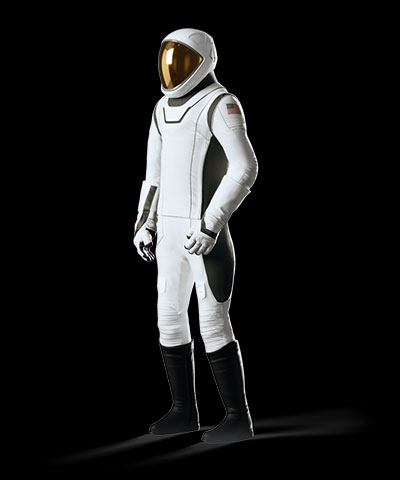 Space News space history and artifacts articles Messages space history discussion forums Sightings worldwide astronaut appearances Resources selected space history documents |
If you have previously registered, but forgotten your password, click here. | ||||||||
| Robert Pearlman | SpaceX release The Extravehicular Activity (EVA) Suit | |||||||
| SkyMan1958 | There are at least four things that I wonder about this suit. First, is there a liquid cooling garment of some sort associated with it? If not, I can see a repeat of the astronauts overheating as per the old Gemini suits. Second, how will the visor's coating work in space? Space is not like wearing normal light activated sunglasses. You are going from extremely bright to extremely dark, which is why NASA astronauts have exterior visors that they can move up or down as needed. Third, how does the astronaut change his/her interior settings, warmer/colder etc., without a vambrace or some sort of a control unit? Is the HUD optically sensitive to where the astronaut's eyes are looking, or something of that sort, so that the astronaut can adjust settings that way? Fourth, assuming the astronaut is attached to the spacecraft via an umbilical, is the umbilical still going through the astronaut's thigh? I would think that sort of setup would totally mess with your center of mass/center of gravity while doing an EVA. | |||||||
| Robert Pearlman | This spacesuit is not in the same class as the extravehicular mobility unit (EMU) or Apollo A7L. It has no portable life support system and, at least on Polaris Dawn, it is only expected to support a stand-up-like EVA for about two hours.  As such, there may not be a need for a cooling garment or temperature controls. It may use the same approach as the SpaceX IVA suit, which is cooling and circulating the nitrox air that the wearer also breathes. (Any needed adjustments to the flow could be made by another crew member inside Dragon or maybe even the ground.) From what I can tell, details about the visor's tint have not yet been released. As for the umbilical, according to SpaceX's website, the connection point remains on the thigh. But again, this was designed for a stand-up EVA... | |||||||

